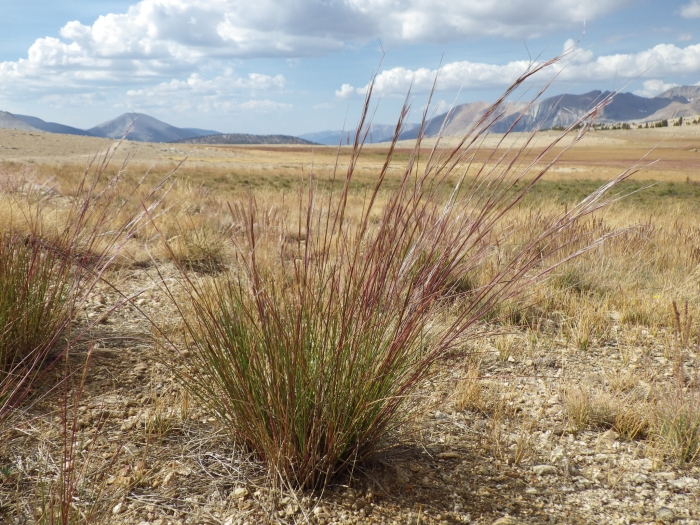Western Needlegrass
(Stipa occidentalis)
Western Needlegrass (Stipa occidentalis)
/
/

© Matt Lavin
CC BY 4.0
Image By:
© Matt Lavin
Recorded By:
Copyright:
CC BY 4.0
Copyright Notice:
Photo by: © Matt Lavin | License Type: CC BY 4.0 | License URL: http://creativecommons.org/licenses/by/4.0/ | Uploader: mattlavin | Publisher: iNaturalist |



















Estimated Native Range
Summary
Stipa occidentalis, commonly known as western needlegrass, is a perennial bunchgrass that forms tufted clumps and is native to a variety of habitats in western North America, including grasslands, open woodlands, and forest clearings from British Columbia to California, east to Colorado and Arizona, and extending into northeastern Mexico. It can reach up to 47 inches in height, with fine, hairlike leaves and an inflorescence that extends up to 12 inches long. Each spikelet is adorned with a distinctive, hairy awn that is kinked twice and can be up to 2-2 inches long. Western needlegrass is particularly noted for its adaptability to diverse environments, including rocky hillsides, scree, gravel plains, and saline or sandy soils, as well as riparian zones like streamsides and lake shores. It can be found at elevations up to 5249 feet.
Western needlegrass is valued for its resilience and low maintenance, making it suitable for restoration projects, erosion control, and as an ornamental grass in xeriscaping due to its drought tolerance. It thrives in full sun to part shade and prefers well-drained soils, although it can tolerate a range of soil types, including those with poor fertility. While it does not have significant disease or pest issues, it can be sensitive to overwatering and poor drainage.CC BY-SA 4.0
Western needlegrass is valued for its resilience and low maintenance, making it suitable for restoration projects, erosion control, and as an ornamental grass in xeriscaping due to its drought tolerance. It thrives in full sun to part shade and prefers well-drained soils, although it can tolerate a range of soil types, including those with poor fertility. While it does not have significant disease or pest issues, it can be sensitive to overwatering and poor drainage.CC BY-SA 4.0
Plant Description
- Plant Type: Grass
- Height: 1.5-2.5 feet
- Width: 1.5-2.5 feet
- Growth Rate: Moderate
- Flower Color: N/A
- Flowering Season: Spring, Summer
- Leaf Retention: Semi-deciduous
Growth Requirements
- Sun: Full Sun, Part Shade
- Water: Medium, High
- Drainage: Medium, Fast
Common Uses
Drought Tolerant, Erosion Control, Low Maintenance
Natural Habitat
Grasslands, open woodlands, and forest clearings in western North America
Other Names
Common Names: Pine Bluegrass
Scientific Names: , Stipa occidentalis,
GBIF Accepted Name: